“This article is published with the permission of RoadRUNNER Motorcycle Touring & Travel Magazine. It is not for sale or redistribution. RoadRUNNER is a bimonthly motorcycle touring magazine packed with exciting travel articles, splendid photography, maps and GPS files. Subscriptions are available online (www.roadrunner.travel), or by calling (866) 343-7623.”

The tires of our heavily-laden bikes bite into the freshly fallen snow that blankets the ground. We cautiously pull past the weather worn sign on the outskirts of Ushuaia which proudly reads “Bienvenidos a la Ciudad mas austral del mundo”, or “ Welcome to the southern-most city in the world.”
Past a gnarled and twisted tree line we bear left to take an undulating trail through trees and across a stream. Up on the pegs, we ride the last mile of the coastal road that has kept us company for 2316 miles, from Argentina’s cosmopolitan capital Buenos Aires, to this weather tortured landscape of jagged peaks and freezing waters.

We are in Tierra del Fuego, one of the most remote places on earth. This is a rugged and unforgiving landscape studded with glaciers and shared between Chile and Argentina at the southern tip of South America. Slowly falling rain penetrates our suits, and an icy wind bites any bits of exposed skin. It doesn’t matter. We are lost in a long-imagined moment, posed for a special photo aside the famous brown board that denotes the end of the Ruta 3. It’s not possible to ride farther south in the world. There is nothing below this windswept place but 650 miles of treacherous southern seas and the icy continent of Antarctica.
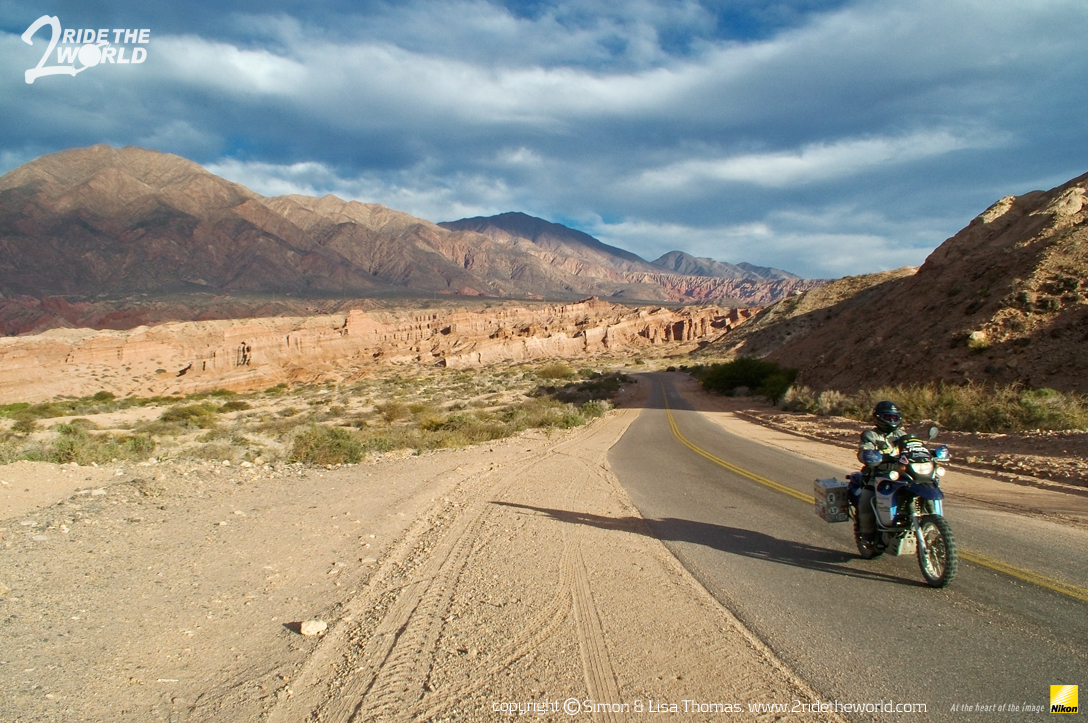
North through the small Chilean port town of Porvenir, the rough concrete road to the dock makes a welcome change to the mud-caked track we’ve ridden for the last two days. The red and rusting Melinka ferry waits to transport us across the historical Magellan Straits, the most important natural passage between the Pacific and the Atlantic oceans, infamously tough to navigate because of the unpredictable winds and powerful currents. As we pay our $30 US for the crossing, the rather Rubenesque ticket agent enthusiastically conveys today’s favourable sailing conditions. “You have made the right choice to sail in the daylight.” Two and a half hours later, the large metal door of the bow slaps the port side, spilling us onto the wide boulevards of Patagonia’s third-largest city, Punta Arena. We are still just 809 miles from the coast of Antarctica.

Swapping the busy city streets for the Ruta 9 we are making good progress. The asphalt abruptly ends as we hit washboard and plough into the rippio, a mixture of thick gravel and large stones. We’re bouncing like rag dolls and need our wits about us as our bikes squirm wildly on the track. The sweeping Chilean “highway” takes us past Puerto Curtze, Villa Tehuelches, and inches us close to the Argentinian border before easing us past Puerto Natales, the gateway town to Torres del Piane. Past Good Hope Sound, we flirt with asphalt for twenty miles before returning to the rippio. We’re skirting the Patagonian steepe, a vast landscape comprising 260,000 square miles of barren gravel plains and wind-tormented plateaus, where the temperature rarely exceeds 12°C (53F) and averages just 3°C (37F). This is the largest desert in the Americas and is the seventh largest desert in the world. Truly, a land of legend. At a small wooden kiosk we pay 20,000 Chilean pesos ($40 US) to ride into one of the most dramatic UNESCO reserves in the world.
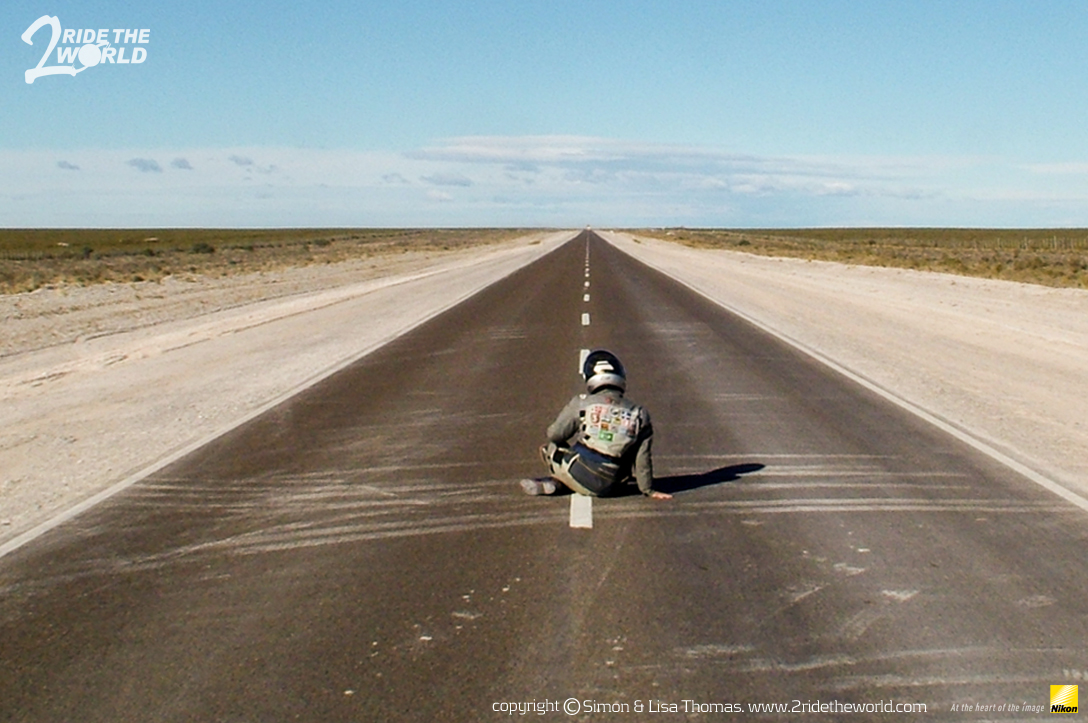
Riding a roller coaster dirt track deep into the Parque Nacional Torres Del Paine, the spine of the Andes emerges dramatically from the landscape, exposing the teeth of the Paine Massif. Wild horses graze by the side of the track before scattering at our approach, and bemused llamas lift their heads and stare at us as as we pass. The track ahead splits a turquoise lake just before it rises and disappears. The hair on the back of my neck is standing on end as we pass close to icebergs the size of buildings, floating casually in the wind-wiped waters. These massive ice blocks have broken off from the tip of a glacier that flows directly into the lake. Pit-stopped in front of our first clear mountain view, we strain to absorb one of the most astonishing landscapes either of us have seen. A scuttling to our left catches our attention. We are delighted to see two wild silver foxes searching for a respite from the wind. We lay on the ground in the hope they will feel less threatened. Fifteen minutes later we are rewarded as they settle down no more than eight feet from where we’d taken up position.
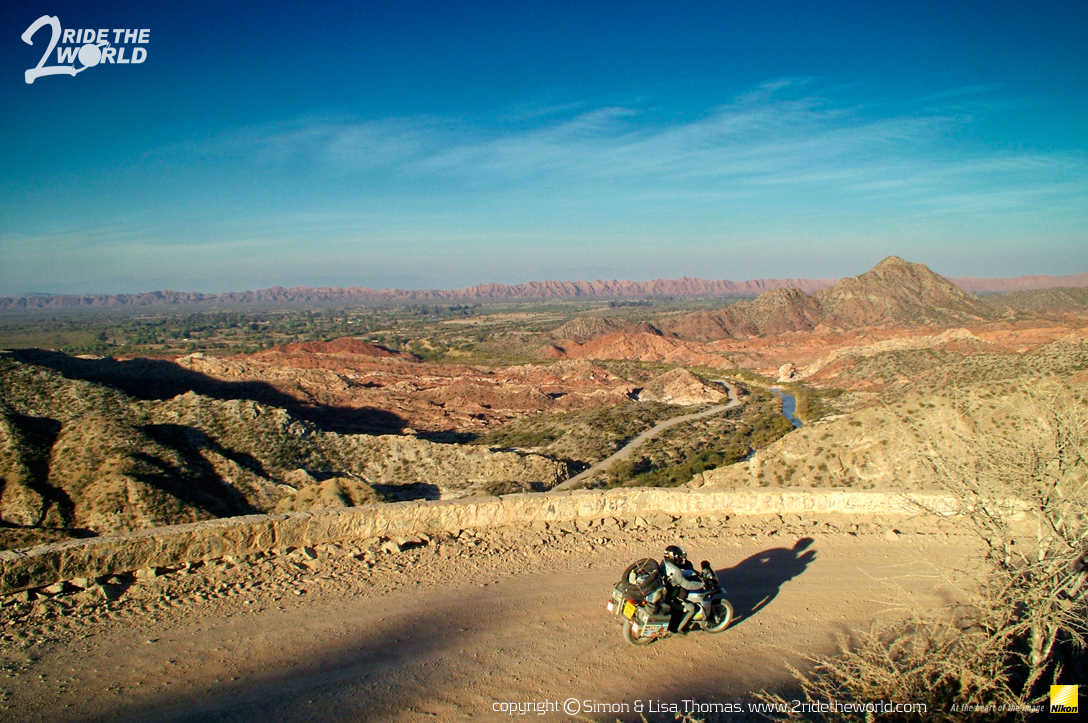
With the temperature dropping, we press on and finally pitch our tent at camp Pehoe. We struggle to drive our tent pegs into the freezing ground, but our location directly in front of el Torres is our grand reward. Sitting in the low awning, a cup of well-deserved tea in hand, we watch as the crystaline light of the day transforms to a soft pink, bathing our incredible mountain view in shades of gold and rose.
In the morning we struggle to pack away our ice covered tent but are soon bobbling back along the pot-holed dirt track to the main park junction, where we pick up the sign for El Calafate. The day’s cold drizzle is making the track slippery as we find our way to the small border crossing where we slip back into Argentina.
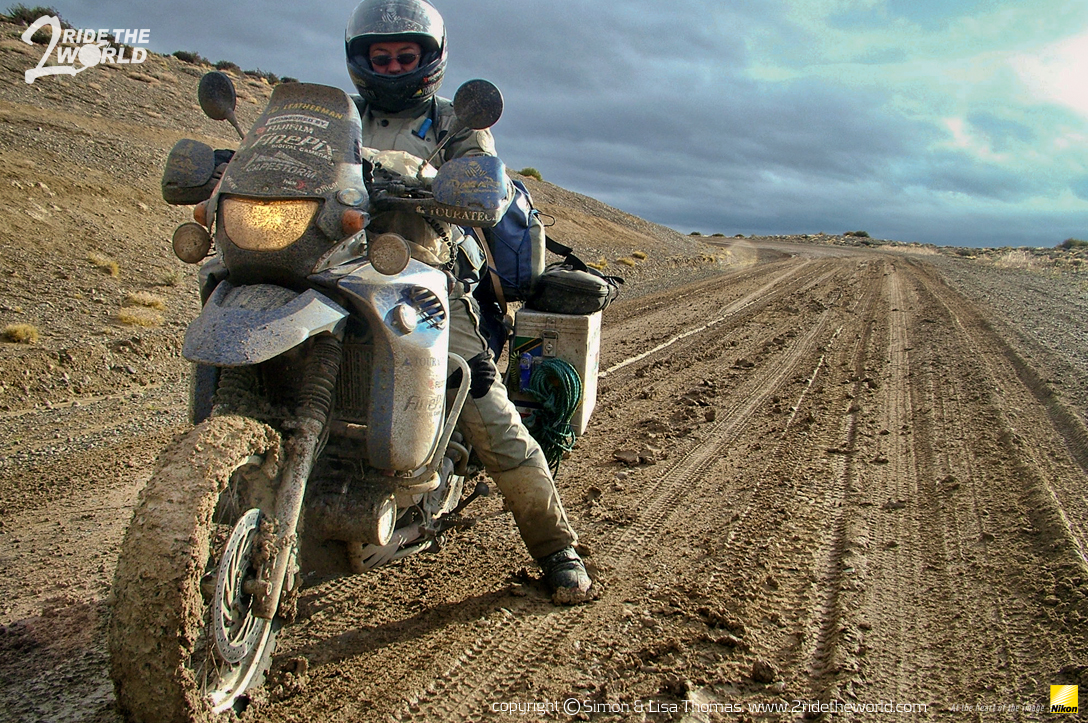
Three miles east of the tiny border crossing, our progress is halted as we are ordered to stop at a small army check-point. We are questioned firmly about our route and our reasons for entering Argentina. “Seguridad!” the older official barks, demanding proof of motorcycle insurance. We confidently hand over our forged “World Motor Vehicle” insurance cards. The officer looks disappointed that once again, he will have no stories to share around the table, and with a grunt accepts it and dismisses us to continue our journey.
We arrive in El Calafate by dusk. Swinging a quick u-turn we park outside the Hostel del Glacier, almost falling from the bikes in our desperate bid to reach the warmth inside. Firm beds, a small but clean bathroom, and best of all, radiant floor heating. We strip and simply lie on the floor for ten minutes, soaking up the heat passing from the shiny ceramic tiles.
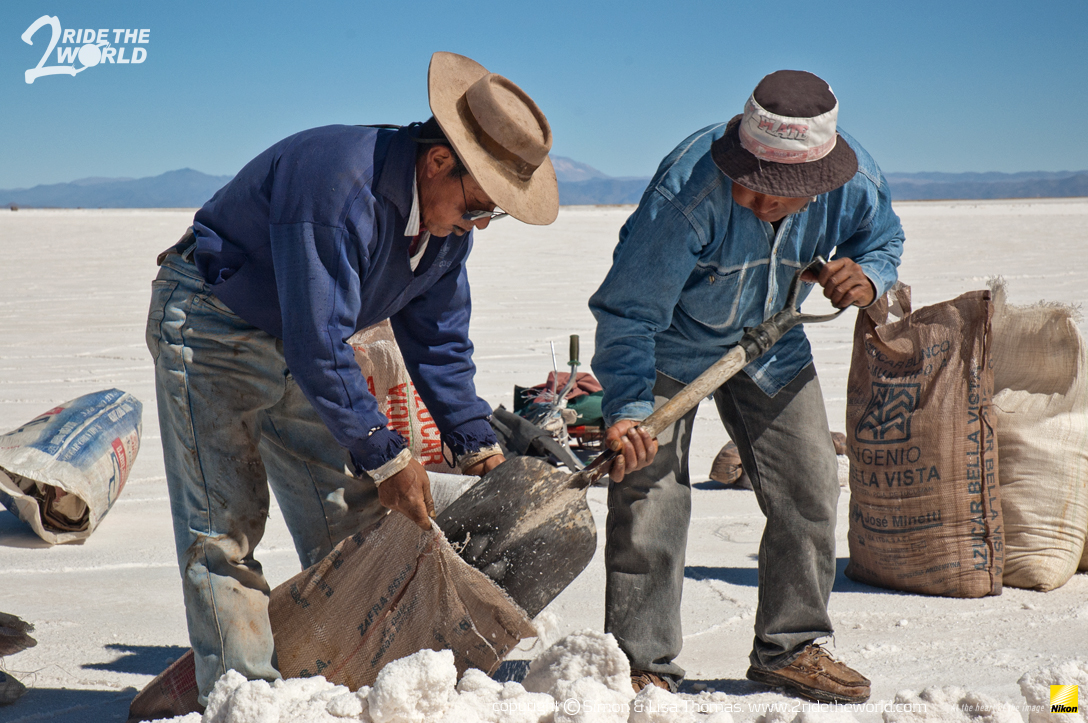
The following morning we head west on the Ruta 11. Skirting the vast Largo Argentina, we are on route to a prehistoric miracle. The snow-topped peaks in the horizon set a perfect backdrop as I chase Lisa on her F650GS in and out of the repeating curves. Our temporarily luggage-free bikes seem as giddy as we are to be flying through the landscape. Taking full advantage of the dry asphalt surface, we quicken the pace, soon arriving at the Perito Moreno park entrance where we swap 60 pesos for two visitor passes. We still have 30km to ride to the glacier itself, which flirts with us in our side view as we hug the mountain through the twisting pass.
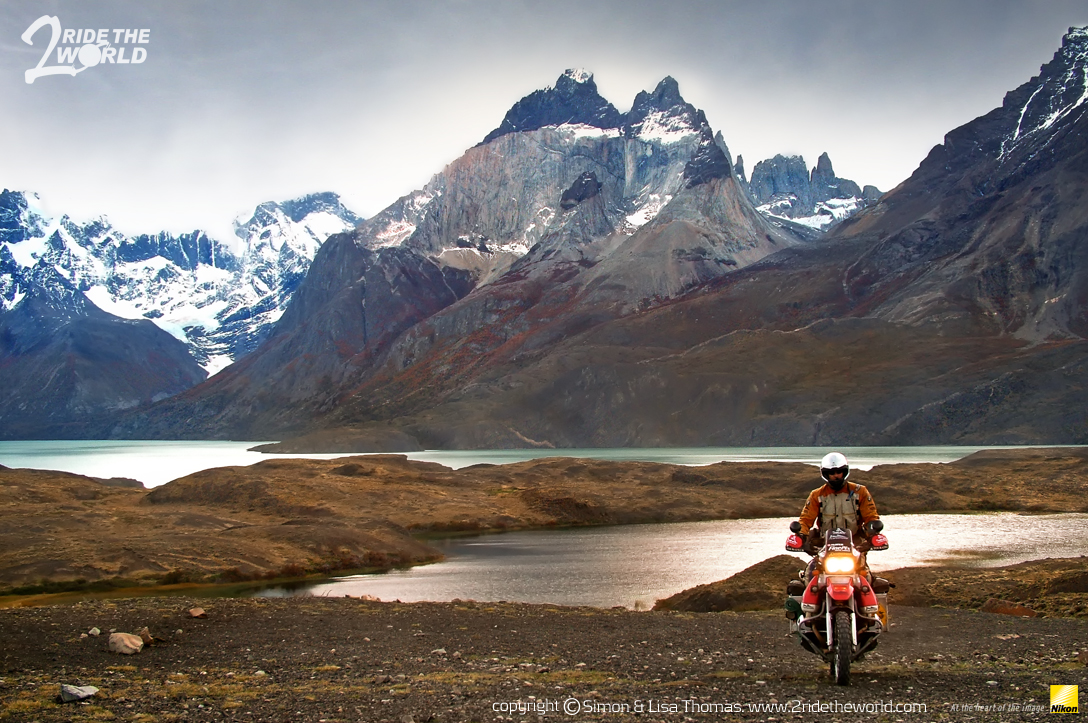
We park under the cover of an ancient cedar, walking to the view point our first impression of the glacier. It leaves us absolutely breathless. The sheer size and shape of this prehistoric ice field has our minds reeling as we grapple with is proportions; three miles of horizontal distance are fronted by a massive two-hundred foot panoramic wall of cobalt blue ice. The sun does its best to pierce the heavy cloud base, occasionally winning when a contrasting finger of white light breaches the grayness and highlights the dragon-like scales of the glacier’s upper surface. Incredibly, unlike nearly every other glacier on the planet which recedes over time, The Perito Merino Glacier is in constant flux, continuously groaning, creaking, and moving ever forward at a rate of up to eight feet per day. As we watch, the glacier’s moans are amplified by the towering mountains on all sides. This stunning vista before us epitomizes the natural beauty and splendor of Argentina.

Then it happened, the moment we’d hoped so desperately to witness. We watch in awe as one of the vast ice towers at the glacier’s leading edge pulls itself free, and a thunderous, elongated cracking sound echoes around the valley, announcing the event. Tell-tale powder ice erupts from the fracture. We frantically click the camera lens as thousands of tons of ancient ice launch from the cliff face, plummeting in slow motion into the milky blue water. The rupture hits the surface with incredible force, sending water shooting high into the air and pushing out a mini tsunami towards the shore. Then it’s gone, impossibly swallowed into the depths.
Three days after the astounding moment at the glacier, we find ourselves doing battle with the most legendary route in Argentina, the Ruta Quaranta, or as it’s more commonly referred to, the Ruta 40. The 40 is a Mad Max-style dirt road that rubs shoulders with the Andes for 3,209 miles. A wide-eyed ride, running from Cabo Vírgenes to La Quiaca that goes from sea level to 16,404 feet, this brute of a road connects twenty-seven Andean passes, crosses 236 bridges, and in summer, 80mph winds are considered “the norm”. In spite of Argentina’s efforts to tame her, the 40 remains a truly wild experience.
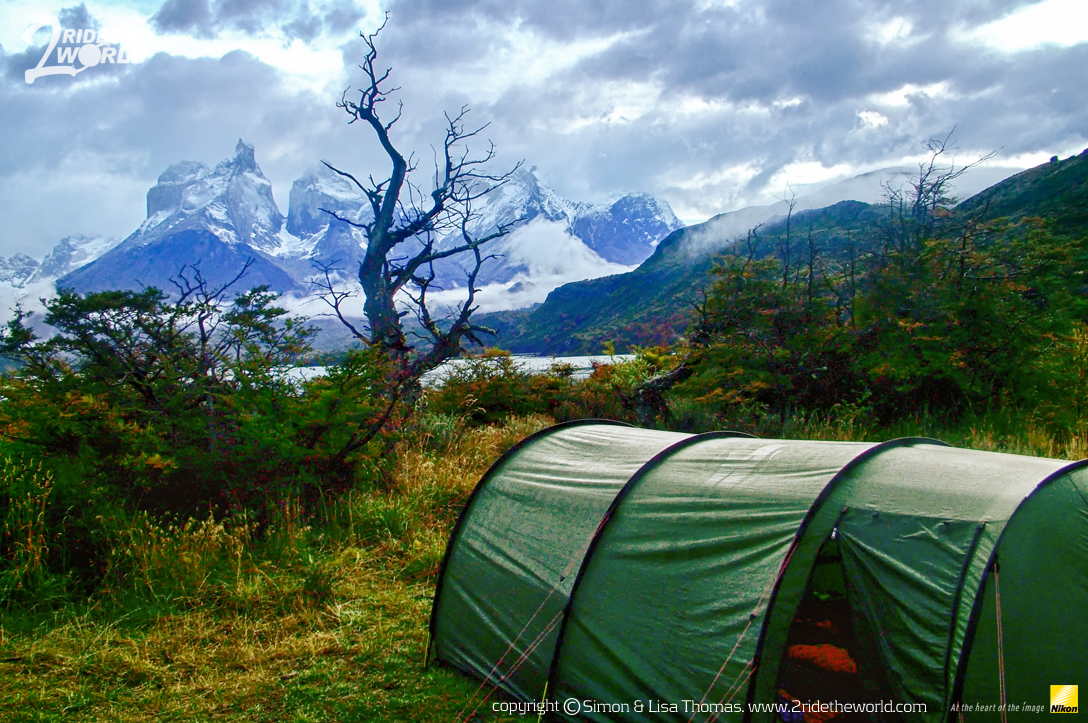
Passing Tres Largo, we are hit by punishing gusts that threaten to knock us off our bikes. Instinctively, our feet stab at the ground, looking for purchase. The 40 is already earning its reputation. The relentless wind, hail storms, and mud all work together to transform this mythical landscape into a Tolkein-like Mordor nightmare. In second gear, we slide forward, our route vanishing into the bleak and barren steepe ahead. It’s been hours since we’ve seen any sign of life. Not a single building, light, or car obstructs our view for mile upon mile. Out here it’s just us the llamas, and the occasional armadillo that scurries by as tumbleweeds roll across our path, serving only to emphasize our isolation.
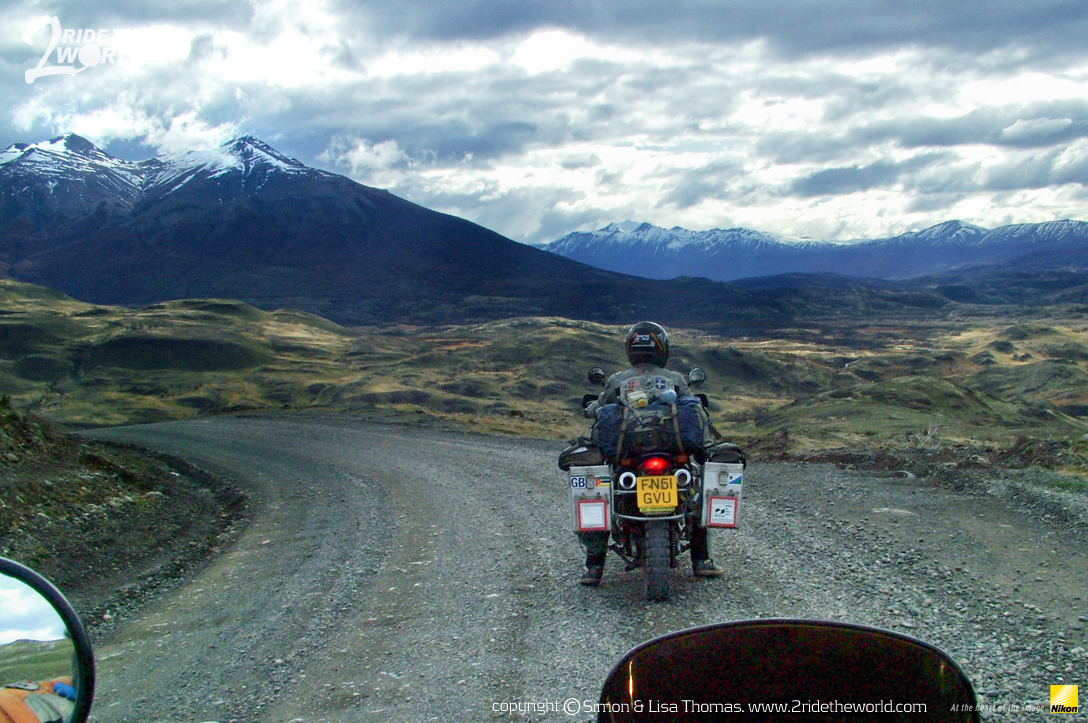
“Nothing is happening! I’ve got no steering!” Lisa yells. My face is frozen as I lift my visor to answer, the air born ice stings my eyes. The problem, as before, in so many remote locations, is mud. This mud is a particular breed of clay, sand, and constant precipitation. This is the stuff that drags you to your knees and threatens to suck the life force out of you. Wedged between our tires and engine cases, the quagmire is so powerful that our wheels stick fast, unable to turn. With numb and clumsy hands, we pull enough of the wheels clear to once again move the bikes.
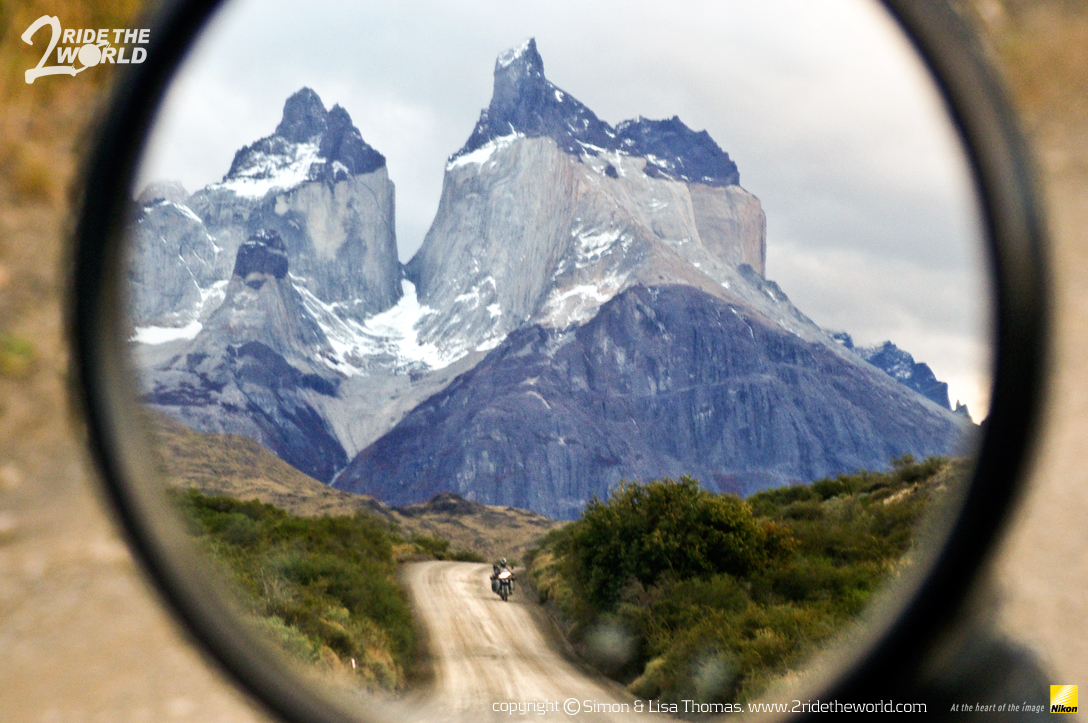
As the last of our energy deserts us, a small white sign for Estancia La Siberia offers us a glimmer of hope. A few minutes later we are sliding down the short track. Our host, Estaban, has heard the bikes and is waiting to greet us. Sanctuary for the night costs us 50 pesos, roughly $12 US.
We are 3,421 miles north of our first meeting with the 40, our rough beginnings having eased dramatically over the weeks to become a love affair, her capricious turns revealing the “real” Argentina. It’s true, we are a little battered, but we are all the richer for the privilege of riding her.
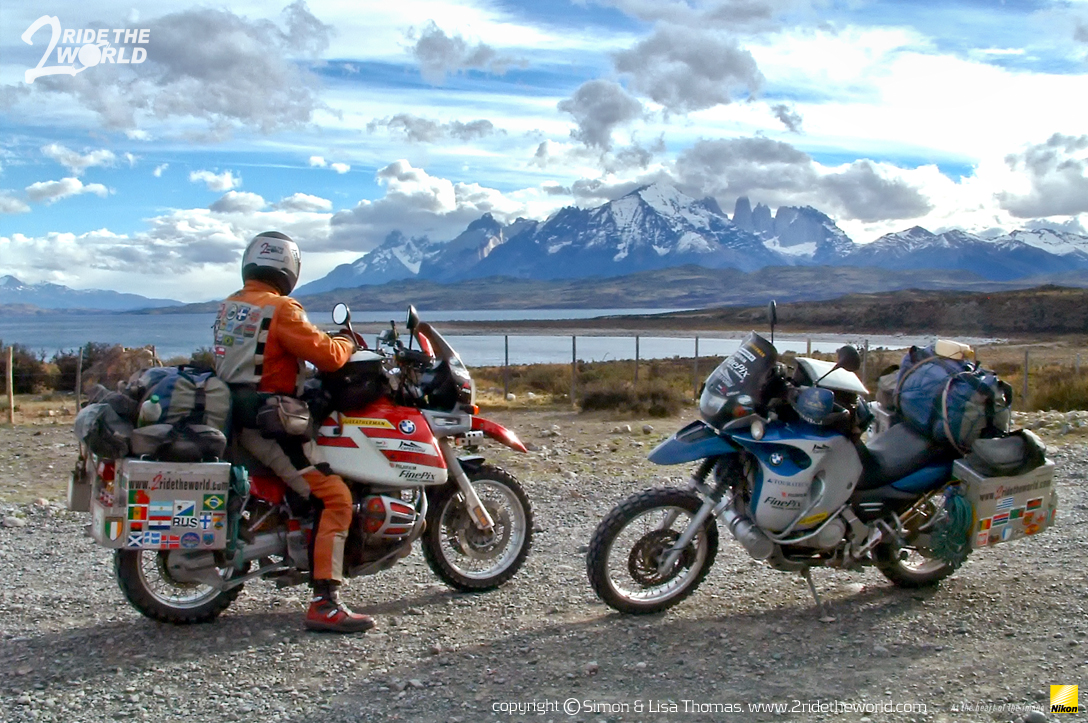
Read more stories from Simon and Lisa’s motorcycle journey around the world HERE.
Click HERE to learn more about 2RideTheWorld.